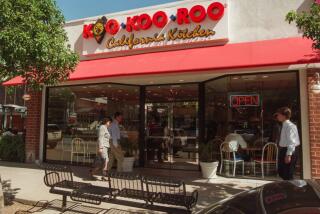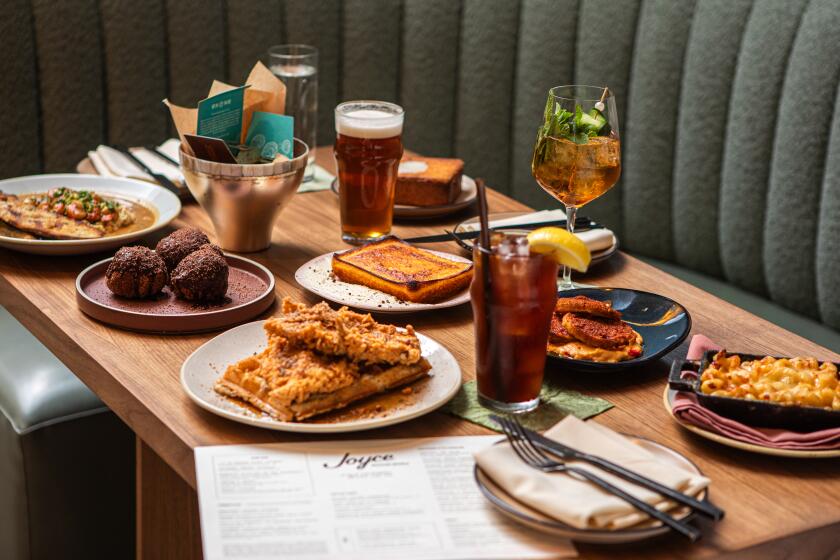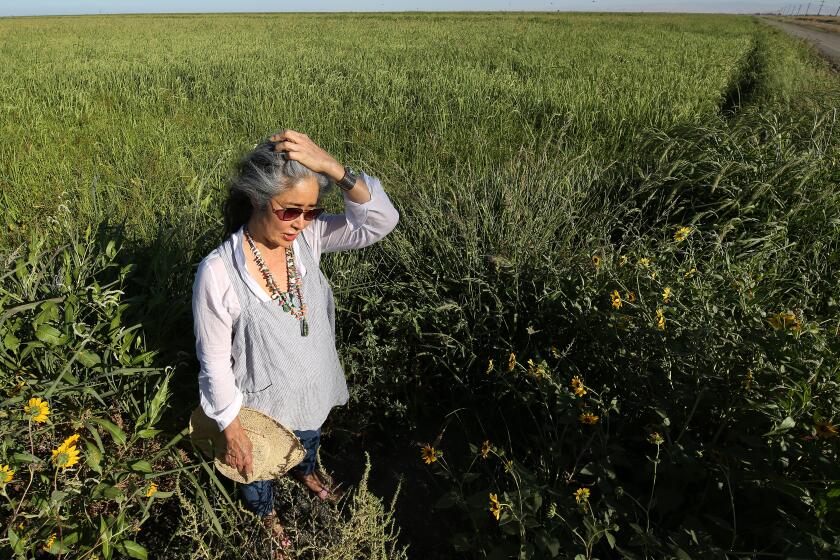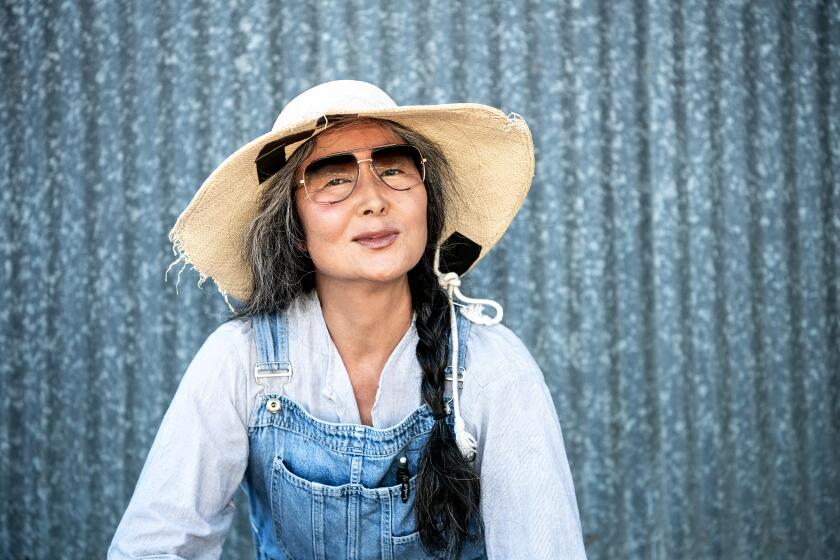Fourchette Falls Short of Its Potential
The elements should blend together perfectly. Take a seasoned French chef, a charming space and a quiet beachfront street. Then shake and serve.
The result is Fourchette, an attractive--but not altogether satisfying--new neighborhood bistro in Newport Beach. The chef and owner of Fourchette is Algerian-born Frenchman Denis Sidhoum. You’ll spot him, when he isn’t toiling in the kitchen, overseeing his dining room from a vantage point next to the restaurant’s small bar. That’s him, decked out in chef’s whites ribbed with red and blue stripes, wearing the colors of La Belle France herself.
Fourchette’s surroundings are hard to resist. The posh Deco-style room features mustard-yellow walls, a moss-green ceiling and long banquettes running along the room’s perimeter. On one side, the banquette is covered in chic black fabric. Across the room, another is upholstered in a floral Provencal print.
Copper pots and Deco posters hang from the walls, and white tablecloths are draped over every table. The music is very French, but of course. Sidhoum selects classic tunes such as “La Mer” and “Milord” from his collection of CDs. In a more contrived atmosphere, the nostalgic French songs might seem hokey. But here, they fit right in.
Soon after sitting down, you will be plied with a generous spread of complimentary appetizers: a garlicky homemade aioli tinted green with herbs, a grainy eggplant caviar, and a dish of marinated artichokes and mushrooms. All of these starters make excellent foils for the crusty loaves of house French bread that are replenished by waiters during the meal.
Unfortunately, from here on out things not only don’t improve, they might even take a distinct downturn. Occasionally I get the impression there is talent in this kitchen. More often than not, though, the chef seems to be phoning it in.
Take two poultry dishes Fourchette serves as entrees, coq au vin and canard aux pruneaux. The first is a celebrated farmhouse dish of chicken either braised or stewed in red wine (preferably a good Burgundy-although this menu tells us Bordeaux), along with bacon, mushrooms and sometimes potatoes. The second is duck roasted in an oven with prunes, a specialty from the southwest of France.
Fourchette’s coq au vin is one tough bird. And while one does note bacon, onion and potato in the bland sauce, any flavor of wine is virtually undetectable. The duck, meanwhile, is equally unappealing. The skin is flaccid, the meat is even tougher than the chicken and the pruneaux turn out to be a halved, undercooked pink fruit that I’m willing to admit was once a plum. Sacre bleu.
There are some bright spots. Prince Edward Island mussels come steamed in a delicious white wine, onion and parsley nage. And salade de che^vre chaud is a nice mixed green salad tossed with herbs, on top of which is a round of walnut-crusted, slightly warmed goat cheese. The classic bistro dish, steak frites, is also fine. It’s a good-sized and flavorful hunk of nicely charred steak topped with a mai^tre d’hotel sauce. And the fries, while not quite as crisp as I personally like fries to be, manage to be tasty anyway.
Another good dish is lamb tajine, a hearty dish that is traditional in northern Africa. Tajine is the name of a rustic, earthenware casserole with a conical lid that’s used for braising or stewing primarily in countries such as Morocco and Algeria. Since chef Sidhoum has roots in Algeria, it’s not surprising that the best item on the menu is a nicely braised lamb shank on a bed of fluffy couscous, and assorted vegetables cooked in a flavorful broth.
Tasting a dish like this, I couldn’t help wondering why the menu contained so many misses. A rich lobster bisque, for example, needed more sherry and was seriously under-salted. The creamy, coral-pink soup laced with sweet little langoustines should have been wonderful.
Assiette de charcuterie, on the other hand, is a man-sized platter of olives, tomatoes, Lyonnaise-style garlic sausage--and slabs of the insipidly under-seasoned pa^te maison. The dish just lacks that certain, oh well, je ne sais quoi.
*
And so it goes. Saumon aux poivrons doux is a well sauteed, nicely fresh piece of fish served on a bed of spinach, topped with a flurry of fried onion straws. Nothing wrong there. But another bistro classic, blanquette de veau, needs serious work. When you order a blanquette you expect tender pieces of veal in a blissfully light cream sauce. In this version, there are large, slightly tough chunks of veal, and a sauce characterized by a faintly sour aftertaste, nothing close to the sweetness imparted by the proper use of cream.
After dinner, the best dessert is a berry studded creme bru^lee with a crackling sugar crust. Fourchette also prepares clafoutis, a fruit and custard tart that has recently become popular in this country. The one I tasted contained pear, and the custard was starchy.
When I dined at Fourchette, the restaurant had not yet received its beer and wine license, but the staff was happy to pour my own bottle without charging a corkage fee. I think Fourchette is a restaurant with potential, providing the chefs pay closer attention to what they are putting on the plates. A tough bird is a tough sell, in any business.
Fourchette is moderately priced. Hors d’oeuvres are $3 to $6. Meat dishes are $11 to $13. Fish dishes are $12 to $14.
BE THERE
Fourchette, 103 Palm St., Balboa Peninsula. (949) 673-3263. Open for dinner only, 5-10 p.m. All major cards.
More to Read
Eat your way across L.A.
Get our weekly Tasting Notes newsletter for reviews, news and more.
You may occasionally receive promotional content from the Los Angeles Times.






